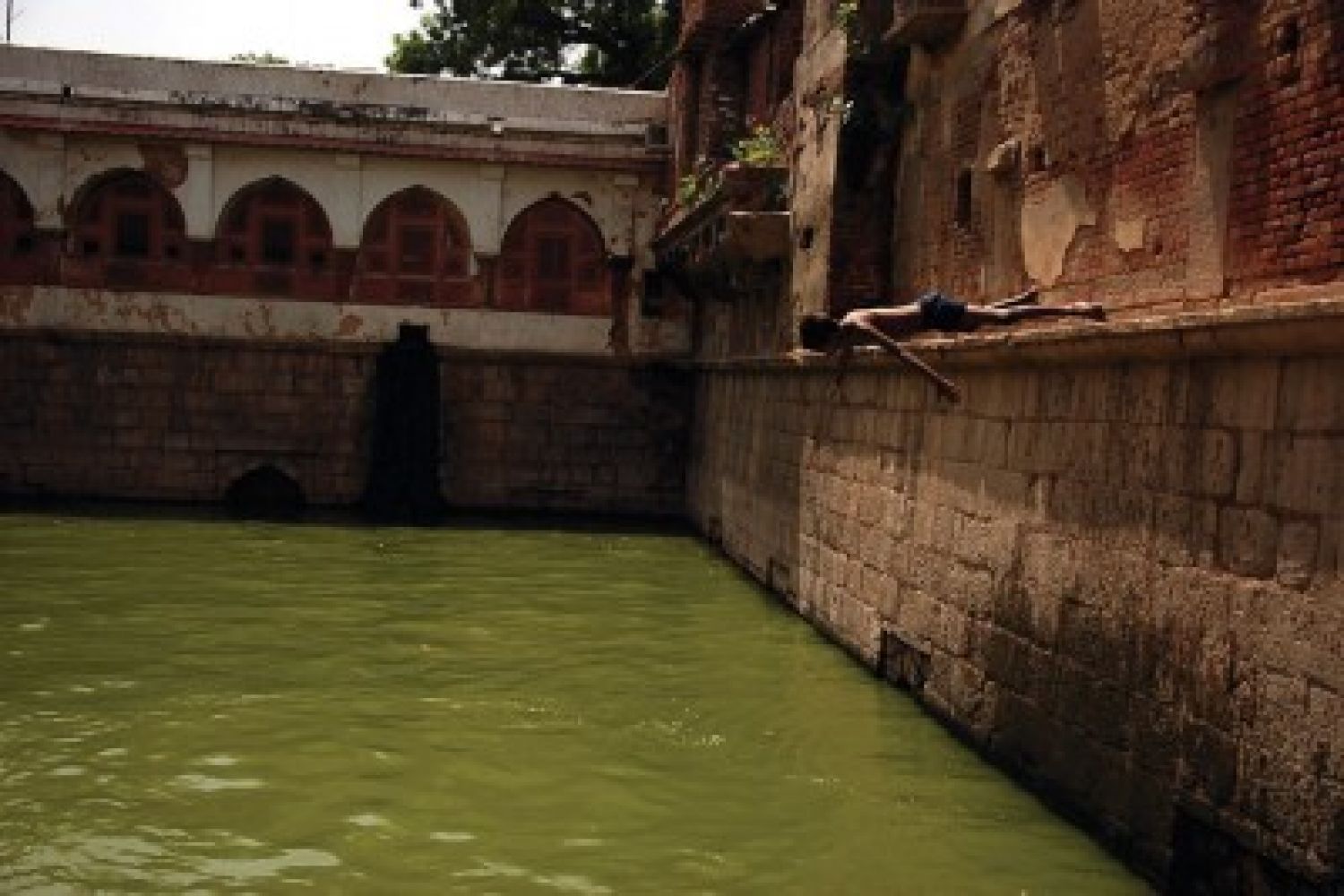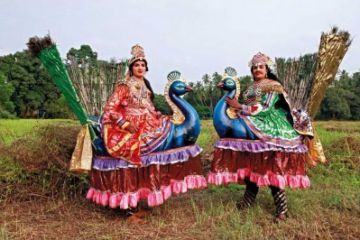
‚ÄúTell him ‚ÄėBaba
ka paani hai‚Äô,‚ÄĚ the elder of the four boys in the baoli (step-well)
quipped mischievously when his friend walked, dripping wet, up the steps of the
13th century step-well in Delhi’s Nizamuddin basti. He was full of how water
had splashed into the bowl of khichdi their other friend was
eating while still in the water.
Hungry from all the
diving and splashing about in the noon hour, the khichdi passed
around was appetising enoug





